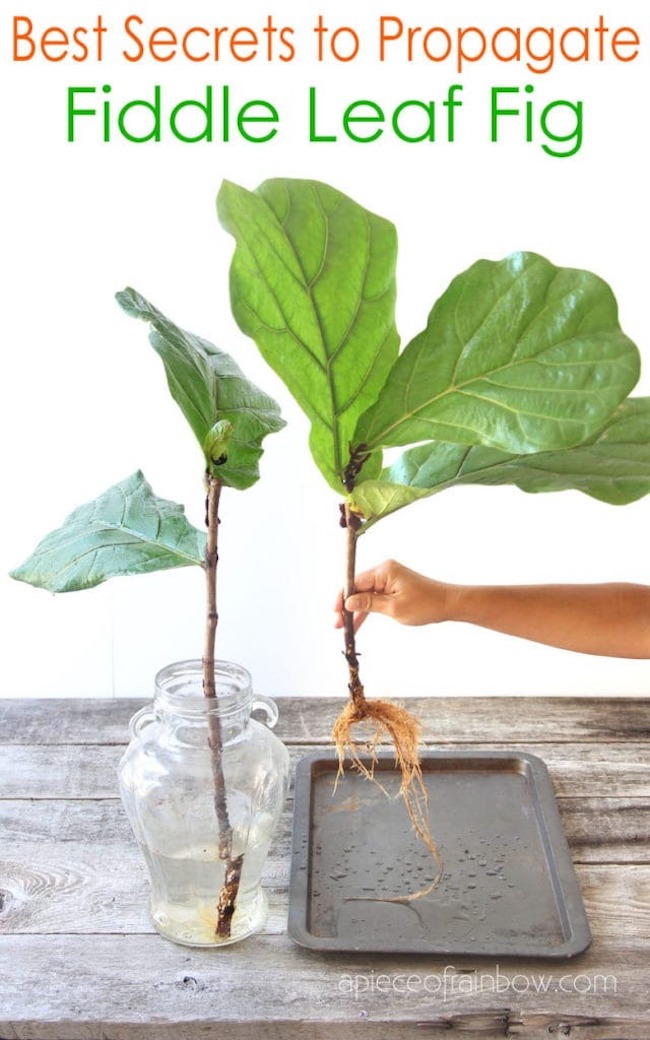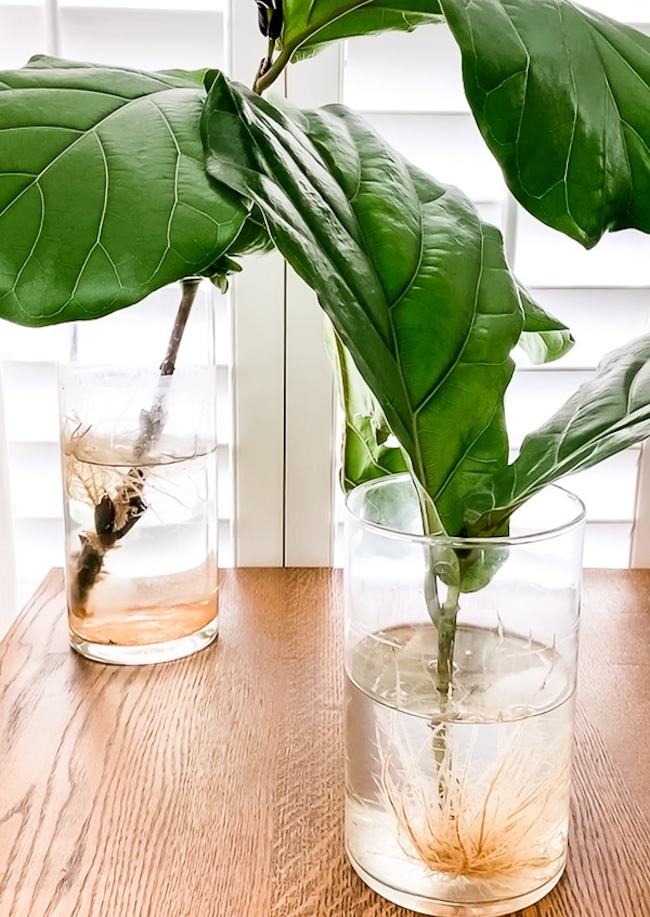How to Propagate Fiddle-Leaf Figs in Water or Soil
Propagating Fiddle-Leaf Twigs – Sounds intimidating, right? It’s actually not. We’ve got you all covered! We’ve prepared a step-by-step guide for you to learn how to propagate fiddle-leaf twigs in both water and soil with all the necessary materials, tips, and the differences between Water and Soil Propagation.
How to Take Fiddle-Leaf Fig Cuttings?
So, let’s get right into it. Whenever you’re looking to propagate, always choose one that is growing actively. Cutting with small side stems or the large central stem both are okay but the former may be easy to manage. Just make sure they are actively growing.
The Materials you’ll need
- Rooting hormone
- Pruners
- Container
- Tropical potting mix
- Chlorine-free water
Taking Cuttings
Choose a stem and cut below the bump where the leaf is (using a thin pair of gloves is advisable). Trim the cuttings at a 45-degree angle and make sure there’s at least a leaf and a short piece of stem in it. If you’ve chosen a large cutting, cut all the leaves except one or maybe two at the top.
Grip the leaves at the point where they join the stem and break them off.
How to Propagate Fiddle-Leaf Fig Cuttings in Water?

The first method we’ll be discussing will be through water.
Step 1: Stick the end of the cutting in a small, clean jar of chlorine-free water. Applying rooting hormone beforehand is not needed for this method.
Step 2: Place the cutting in a spot with indirect light. For the second step, move the jar to a spot in your home that gets plenty of indirect light (especially in the morning). After a while, the water may look cloudy or dirty, in this case, replace the dirty water with clean water.
Step 3: Repot the plant when the roots are at least one inch long. This is where the tropical potting mix comes into play. Replant the cutting in a larger pot and use the tropical potting mix in it.
Step 4: Keep the replanted cutting in a humid space (next to a window). Finally, keep the cutting next to a window where it gets plenty of morning light. Occasionally, water it and make sure that the top layer of soil up to 1-2 inches is always damp.
How to Propagate Fiddle-Leaf Fig Cuttings in Soil?
Now, let’s go into the second method which is propagating fiddle-leaf cuttings in soil.
Step 1: Take Cuttings from your original fiddle-leaf fig plant. The same process but this time, you’ll dip off the end of the cutting in a rooting hormone.
Step 2: Prepare Soil for propagation: In a container, prepare the soil by mixing tropical mix and make sure that the potting mix is slightly moist.
Step 3: Dip the cutting in rooting hormone and plant it. Pour some rooting hormone powder into a small paper cup and stick it in the powder-filled cup until the bottom is covered in the hormone. There’s a chance of the hormone not sticking to the stem. In this case, moisten the end of the cutting and dry it off. This should do the trick.
Step 4: Use a pencil or pen( just make sure there’s no lid) to poke a hole in the mix. Then, stick the cutting into the hole making sure you don’t knock off the powder you put previously.
Step 5: Place it in a spot with indirect sunlight. That is it. In 1-2 months, you’ll be all set.
Soil Propagation vs. water Propagation
Both water and soil propagation are effective. However, both have their advantages and disadvantages. We’ve prepared a table for you to better understand the differences and decide on which method to use.
| Soil Propagation | Water Propagation |
| Soil Propagation can be used for a variety of plants. | Comparatively, Water Propagation can be used for a smaller variety of plants. |
| Some plants root quicker in soil than in water. | Some plants root slower in water than in soil. |
| There’s no visibility during the root developing process. | You can clearly see the root developing during the process. |
| There’s a risk of overwatering. | There’s no risk of overwatering. |
| It can be used for a wider variety of plants like fiddle leaf figs, succulents, and snake plants. | Plants like pothos, philodendrons, and coleus thrive in this method. |
